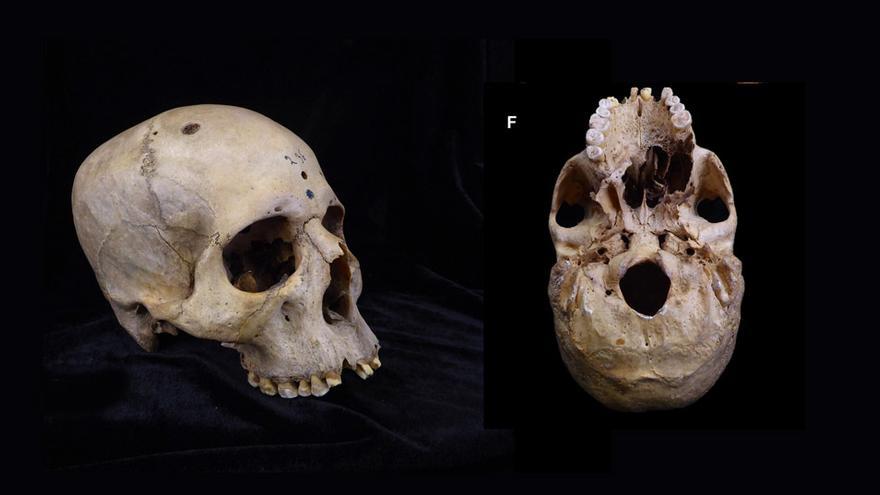The ancient Egyptians may have been at the beginning of cancer research: more than 4,000 years ago they apparently attempted to eliminate cancerous tissue growths and metastases, remains of a skull from that era reveal.
In a find that challenges our understanding of ancient medicine, a team of archaeologists, including Edgard Camarosa paleopathologist at the University of Santiago de Compostela, has discovered evidence that ancient Egyptian doctors could have performed surgical operations to treat cancer more than 4,300 years ago.
This discovery comes from analysis of a human skull that shows signs of a large cancerous tumor on the palate and multiple lesions suggesting bone metastases.
The skull, which dates back to between 4,300 and 4,600 years ago, belonged to an Egyptian man around 30 to 35 years old. The researchers examined the specimen and found clear indications of a primary tumor on the palate and more than 30 small round perforations in the skull, consistent with secondary metastases.
Treating cancer or autopsy?
The skull shows a large lesion, compatible with excessive tissue destruction, as well as about 30 small, round metastatic lesions spread throughout the skull.
Most striking are the cut marks and notches in the areas of metastasis, suggesting that Egyptian doctors may have attempted to explore or even remove these bone tumors.
Evidence of possible surgery
These marks could be some of the earliest evidence of cancer surgery in history, indicating that the Egyptians were ahead of their time in medical and surgical practices.
However, it cannot be clearly determined whether these cuts were made immediately before death or immediately after, as the researchers admit.
Therefore, they do not rule out the possibility that this was also an autopsy of a recently deceased person, with which the ancient healers wanted to examine the ulcers more closely.
Second skull
This study also analyzed malignant lesions and trauma observed in a second skull from ancient Egypt. Both are preserved in the Duckworth Collection (University of Cambridge).
The study provides another finding about gender roles: the second skull analyzed in this research was that of a woman and showed a healed head wound that could have been the result of a fight or a weapon of war. This suggests that the woman may have been a warrior and that she had survived her head injury thanks to medical treatment.
Until now, these battle marks had been found mainly on the skulls of men, and therefore it was assumed that only men had participated in combat as warriors.
The imprints on the woman’s skull raise questions about the role model, which archaeologists will likely pay more attention to in the future.
medical milestone
The authors of this study maintain that the two cases, although not contemporaneous, allow for a paleopathological discussion on the understanding and oncological and traumatological management of such conditions in the past.
The confrontation of two potential treatments represented by two different types of injuries represents a clear limit in ancient Egyptian medical care and a milestone in the history of medicine, the researchers explain in the article published in the journal Frontiers.
Reference
Case report: Boundaries of oncological and traumatological medical care in ancient Egypt: new palaeopathological insights from two human skulls. Tatiana Tondini et al. Frontiers, Volume 11, 2024. DOI:https://doi.org/10.3389/fmed.2024.13716

